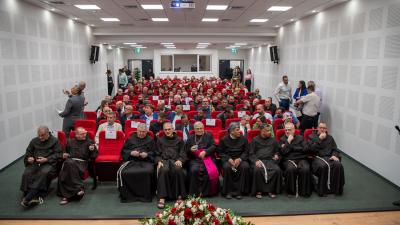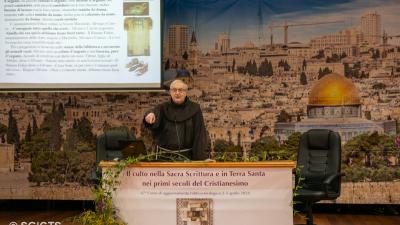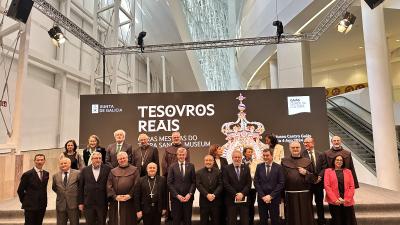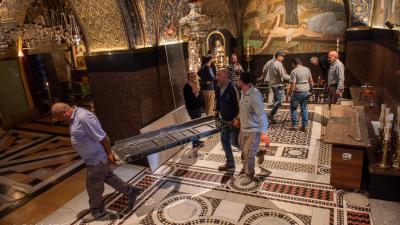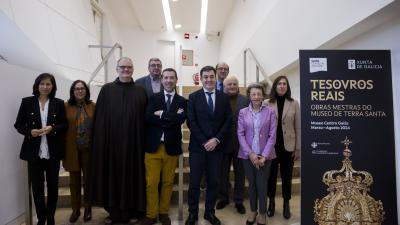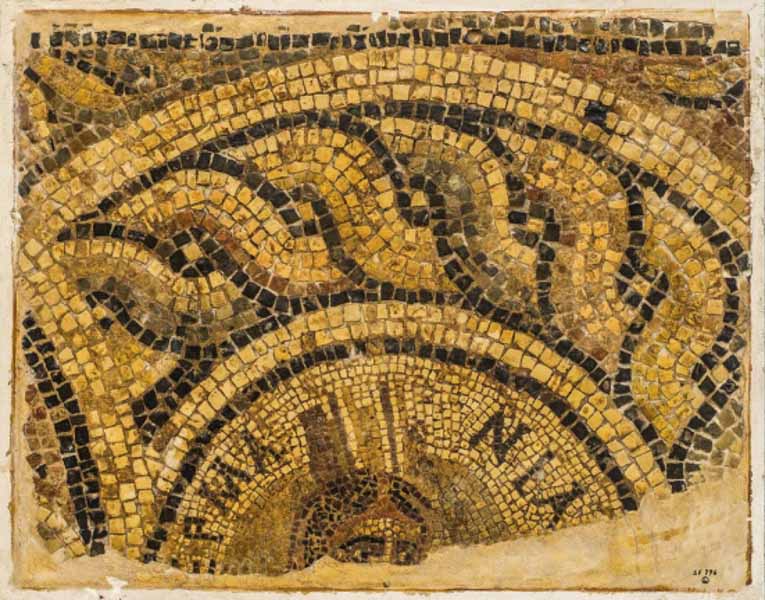
Among the archaeological finds of great artistic value that the Franciscans keep among their collections, as a result of excavations and acquisitions, the Terra Sancta Museum retains some precious busts, mosaics and tiles from the area of Syria, in particular from the cities of Palmyra and Zeugma. For the occasion of the “Faces from Palmyra in Aquileia” exhibition, which will take place from July 1 to October 1, 2017, in Italy at the National Archaeological Museum of Aquileia, the Terra Sancta Museum has lent some of these finds, dating from first to the third century B.C. In addition, other artifacts from the Vatican Museums and other Italian museums are also part of the exhibition.
The exhibition is part of “Wounded Archaeology,” which since 2014, has featured a series of highly successful exhibits, the result of the collaboration of the Bardo Museum in Tunis and the National Museum of Iran, which aim to celebrate the city of Palmyra as a symbol of resistance to the attacks on world cultural heritage. The exhibition emphasizes the dialogue between different cultures and the many artistic and cultural expressions of the Roman world, alongside the funeral reliefs of Palmyra and those of Aquileia. These portraits share [some similarities] with the Roman ones [in] their forms and modes of self-representation of death, revealing themselves as a precious source for the reconstruction of the social fabric of the two metropolises. Both cities, one as a caravan center on the borders between the Greco-Roman West and the Persian East, and the other at the meeting point between the main Mediterranean and European routes, were for many centuries multicultural and multilingual centers, where a figurative language developed from the eclectic contribution of different traditions.
The exhibition, organized by the Museum Department of the Friuli Venezia Giulia region and by the Aquileia Foundation, was curated by Dr. Marta Novello, director of the National Archaeological Museum of Aquileia, and by Dr. Cristiano Tiussi, director of the Aquileia Foundation. The Custody’s Terra Sancta Museum’s finds featured in the exhibition include three mosaic portraits (representing the three Roman provinces of Mauritania, Africa and Germany) four funeral busts and thirty clay tiles. “At the end of the 19th century, a Syrian family donated some of these objects to the Franciscan monastery,” explained Dr. Sara Cibin of the Terra Sancta Museum, “and they are likely to have been preserved by going through the underground antique market.”
Introduced at a press conference in Rome, in the presence of the Italian Minister of Cultural Heritage Dario Franceschini, “the exhibition aims to highlight the cultural relationships that connected Palmyra to Aquileia in the Roman world,” said Dr. Novello . “In preparation [for the exhibit], the restoration of some of our finds and some of those from the Terra Sancta Museum has also been carried out,” explained the exhibit curator. “They were brought back to their original characterization and traces of polychromy were brought to light, particularly in the eyes of one of the reliefs, that were not previously visible.”
With the support of archaeologist Fr. Eugene Alliata and the head of the Custody’s Cultural Heritage [office], Fr. Stephane Milovitch, the finds that were in Jerusalem came to Aquileia, accompanied by Dr. Sara Cibin. “It seems extraordinary that these works have crossed the Middle East and that, despite being pagan, they were preserved by the Franciscans as a witness to human civilization,” said Sara Cibin. In these difficult times for Syria, art is also in danger, just as people are. That is why it is important for those who can still bring courage and confidence to continue working. This is being done by the Franciscans of the Custody of the Holy Land, who during these years of war have always remained alongside the people . Thanks to the support of the ATS Pro Terra Sancta Association , in addition to spiritual assistance, [the Franciscans] can provide material support to the population and continue to promote reconstruction initiatives . So that hope may never die.
Corrado Scardigno Terra Sancta Museum
Beatrice Guarrera Custodia.org
Related articles
►“On the traces of the lion”: Venetian treasures on display in Jerusalem
►Objects that tell a story: an exhibit for the pharmacy of the Custody


